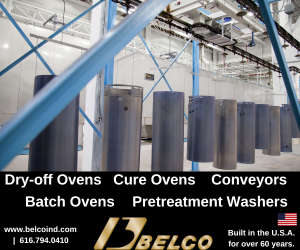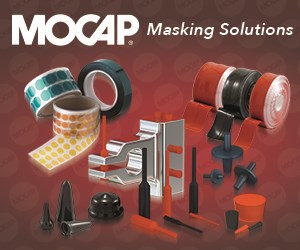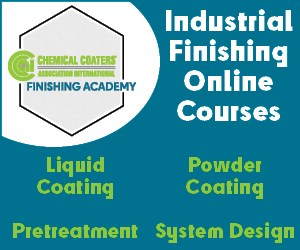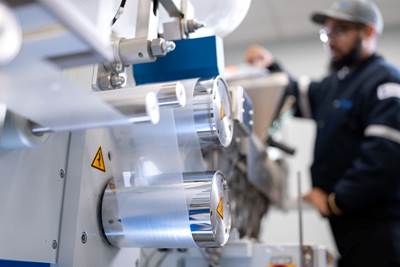Zinc Alloy Plating Affecting Wastewater Treatment Sludge
Due to their desire to reduce chromium content of their parts, a number of our customers are asking us to investigate zinc alloy plating of their parts.
Q. Due to their desire to reduce chromium content of their parts, a number of our customers are asking us to investigate zinc alloy plating of their parts. The possible plating processes include zinc-cobalt, zinc-iron and zinc-nickel. As we begin evaluating these processes, we wanted to get your input on their impact upon our wastewater treatment sludge. We currently perform acid zinc plating, alkaline zinc plating and zinc phosphate. We have a conventional wastewater pretreatment system with our discharge to the city regulated under the Metal Finishing Pretreatment standards (40CFR433). For as long as I can remember, our wastewater sludge has tested non-hazardous and disposed at our local county landfill. We fill a two-cu-yd dumpster about every week. From an environmental standpoint, what impact would these processes present to us if we decide to bring one or more into our facility? R.Y.
A. Based upon our experience, we can give you some guidance regarding air pollution, wastewater pretreatment, and waste disposal in terms how these could change your existing status due to these processes.
While USEPA does not have any national air emission standards on your existing and possible, future processes, your state may have either specific or general air pollution regulations that could impact your facility. Typically, the air pollutant of major concern to states is the hydrochloric (muriatic) acid emissions from your plating tank; the addition of processes could push your facility wide emission rate of air pollutants above an exemption threshold, thus, requiring you to apply and obtain air pollution permit. Since cobalt compounds and nickel compounds are classified as hazardous air pollutants (HAPs), you may need to demonstrate to the state that their emissions do not exceed an ambient air concentration threshold at your property line through air dispersion modeling; based upon our experience and considering the very low emission rates from the plating tank, we would expect that this should not be an issue. For any plating operation, we recommend installation of demisters on the exhaust in order to protect your and your neighbor’s property from the corrosiveness of possible misting from plating processes.
Regarding impact upon your wastewater pretreatment system, you need to obtain information from your plating chemical supplier regarding the presence and concentration of chelating or complexing agents in the plating bath. For example, we know that zinc-iron chemistry can have high levels of gluconates in them; gluconates are very strong metal complexers and “love” copper, nickel, and zinc. Therefore, gluconates can wreak havoc on wastewater treatment systems. Treating gluconates-containing wastes with lime, calcium chloride, or ferric chloride have proven effective. The most cost effective manner is to pretreat the wastewaters from your zinc alloy process so as to deactivate the gluconates or other complexers before they join your existing waste streams and flow to your existing wastewater system.
Depending which zinc alloy process you bring into your operation, the regulatory impact of your waste management practices and costs could be great. First, let’s call the “sludge” a more technically correct and environmentally friendly term - “wastewater filter press cake.” Second, we assume that all of the parts that you process are iron or ferrous based. However, if any aluminum parts are processed through your zinc phosphate, your wastewater filter press cake is a listed RCRA hazardous waste, F019 - wastewater treatment sludges from chemical conversion coating of aluminum.
Under USEPA hazardous waste regulations (aka RCRA, Resource Conservation and Recovery Act) 40CFR261.31, the F006 listed RCRA hazardous waste is defined as “wastewater treatment sludges from electroplating operations except from the following processes: sulfuric acid anodizing of aluminum; tin plating on carbon steel; zinc plating (segregated basis) on carbon steel; aluminum or zinc-aluminum plating on carbon steel; cleaning/stripping associated with tin, zinc, and aluminum plating on carbon steel; and chemical etching and milling of aluminum.” Reviewing USEPA background documents for the hazardous waste listing of F006, the hazardous constituents evaluated were cadmium, chromium, copper, cyanides, gold, lead, nickel, silver, tin, and zinc. Since zinc is specifically exempted and iron and cobalt were not evaluated as hazardous constituents in the F006 background documents, zinc-iron and zinc-cobalt plating would not cause the filter press cake to become a “listed” hazardous waste. Even though these processes will not render the filter press cake a “listed” RCRA hazardous waste, you will still need to re-evaluate the filter press cake for the hazardous waste characteristics [ignitability, corrosivity, reactivity and Toxicity Characteristic Leaching Procedure (TCLP)] after addition of the process(es) to verify regulatory status.
However, since nickel was evaluated as a hazardous constituent and is not exempted, the addition of wastewaters from the zinc-nickel process would cause your filter press cake to become a “listed” RCRA hazardous waste with the F006 designation; this would not only cause your disposal costs to increase significantly, but also significantly increase your regulatory costs. At your current filter press cake generation rate, you will be well above the large quantity hazardous waste generator threshold of 2,200 pounds per calendar month. As a large quantity generator, you will be required to comply with a host of standards including detailed documentation regarding management of hazardous waste on-site, contingency planning, record keeping, annual or biannual reporting to EPA, and initial and annual training. At this point, it would be worthwhile to evaluate the costs and savings of having a separate wastewater pretreatment system for the zinc-nickel line, thereby, significantly reducing the amount of RCRA hazardous waste generated and, possibly, becoming a small quantity generator (between 220 and 2,200 pounds per calendar month); small quantity generators have significantly less regulatory burden as compared to large quantity generators.
No matter what course you take, we urge you to verify the environmental impact by contacting your local and/or state environmental regulatory agencies; if you desire to do so anonymously, engage the services of a professional environmental consultant who could discuss the particulars of your situation without revealing your identity.
Related Content
Hubbard-Hall Acquires BioConversion Technology
The acquisition adds experience and biologics to the AquaPure product line.
Read MoreNASF/AESF Foundation Research Project #122: Electrochemical Approaches to Treatment of PFAS in Plating Wastewater - 10th Quarterly Report
The NASF-AESF Foundation Research Board selected a project addressing the problem of PFAS and related chemicals in plating wastewater streams. This report covers the 10th quarter of work (April-June 2023). Here, we examine the effect of surface fluorination of Ti4O7 anodes on PFAS degradation performance in terms of energy performance as well as formation of chlorate and perchlorate when chloride is present in the solution. The full paper on this work can be accessed and printed at short.pfonline.com/NASF24Feb2.
Read MoreUltrafiltration Membranes, Filter Elements for Improved Industrial Water Reuse
Ultrafiltration membranes help with water reuse in a variety of applications.
Read MoreNASF/AESF Foundation Research Project #121: Development of a Sustainability Metrics System and a Technical Solution Method for Sustainable Metal Finishing - 15th Quarterly Report
This NASF-AESF Foundation research project report covers the twelfth quarter of project work (October-December 2023) at Wayne State University in Detroit. In this period, our main effort focused on the development of a set of Digital Twins (DTs) using the Physics-Informed Neural Network (PINN) technology with application on parts rinsing simulation.
Read MoreRead Next
A ‘Clean’ Agenda Offers Unique Presentations in Chicago
The 2024 Parts Cleaning Conference, co-located with the International Manufacturing Technology Show, includes presentations by several speakers who are new to the conference and topics that have not been covered in past editions of this event.
Read MoreDelivering Increased Benefits to Greenhouse Films
Baystar's Borstar technology is helping customers deliver better, more reliable production methods to greenhouse agriculture.
Read MoreEpisode 45: An Interview with Chandler Mancuso, MacDermid Envio Solutions
Chandler Mancuso, technical director with MacDermid Envio discusses updating your wastewater treatment system and implementing materials recycling solutions to increase efficiencies, control costs and reduce environmental impact.
Read More








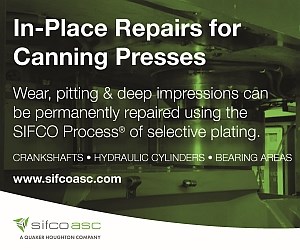


.jpg;maxWidth=300;quality=90)

